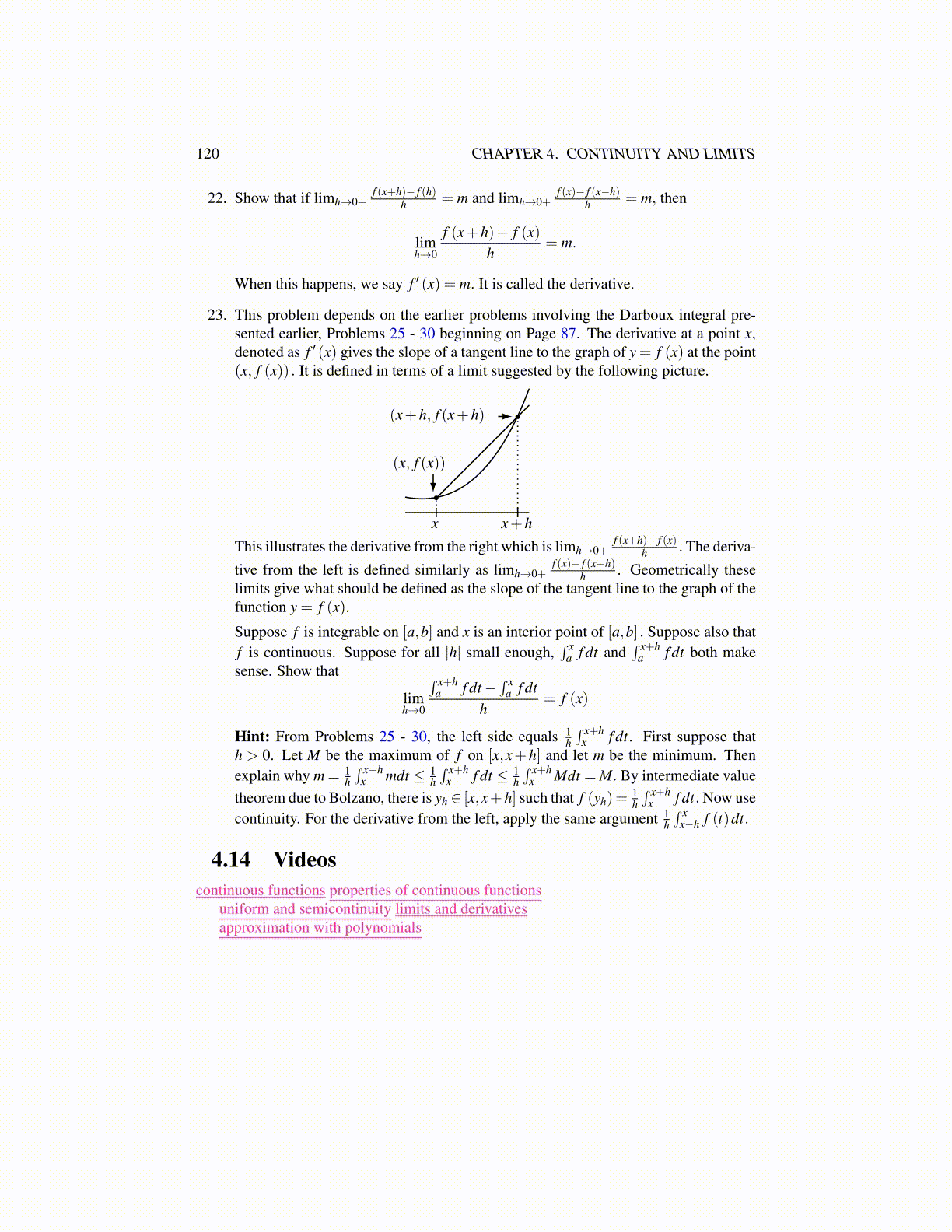
120 CHAPTER 4. CONTINUITY AND LIMITS
22. Show that if limh→0+f (x+h)− f (h)
h = m and limh→0+f (x)− f (x−h)
h = m, then
limh→0
f (x+h)− f (x)h
= m.
When this happens, we say f ′ (x) = m. It is called the derivative.
23. This problem depends on the earlier problems involving the Darboux integral pre-sented earlier, Problems 25 - 30 beginning on Page 95. The derivative at a point x,denoted as f ′ (x) gives the slope of a tangent line to the graph of y = f (x) at the point(x, f (x)) . It is defined in terms of a limit suggested by the following picture.
(x+h, f (x+h)
x x+h
(x, f (x))
This illustrates the derivative from the right which is limh→0+f (x+h)− f (x)
h . The deriva-tive from the left is defined similarly as limh→0+
f (x)− f (x−h)h . Geometrically these
limits give what should be defined as the slope of the tangent line to the graph of thefunction y = f (x).
Suppose f is integrable on [a,b] and x is an interior point of [a,b] . Suppose also thatf is continuous. Suppose for all |h| small enough,
∫ xa f dt and
∫ x+ha f dt both make
sense. Show that
limh→0
∫ x+ha f dt −
∫ xa f dt
h= f (x)
Hint: From Problems 25 - 30, the left side equals 1h∫ x+h
x f dt. First suppose thath > 0. Let M be the maximum of f on [x,x+h] and let m be the minimum. Thenexplain why m = 1
h∫ x+h
x mdt ≤ 1h∫ x+h
x f dt ≤ 1h∫ x+h
x Mdt = M. By intermediate valuetheorem due to Bolzano, there is yh ∈ [x,x+h] such that f (yh)=
1h∫ x+h
x f dt. Now usecontinuity. For the derivative from the left, apply the same argument 1
h∫ x
x−h f (t)dt.
4.14 Videoscontinuous functions properties of continuous functions
uniform and semicontinuity limits and derivativesapproximation with polynomials